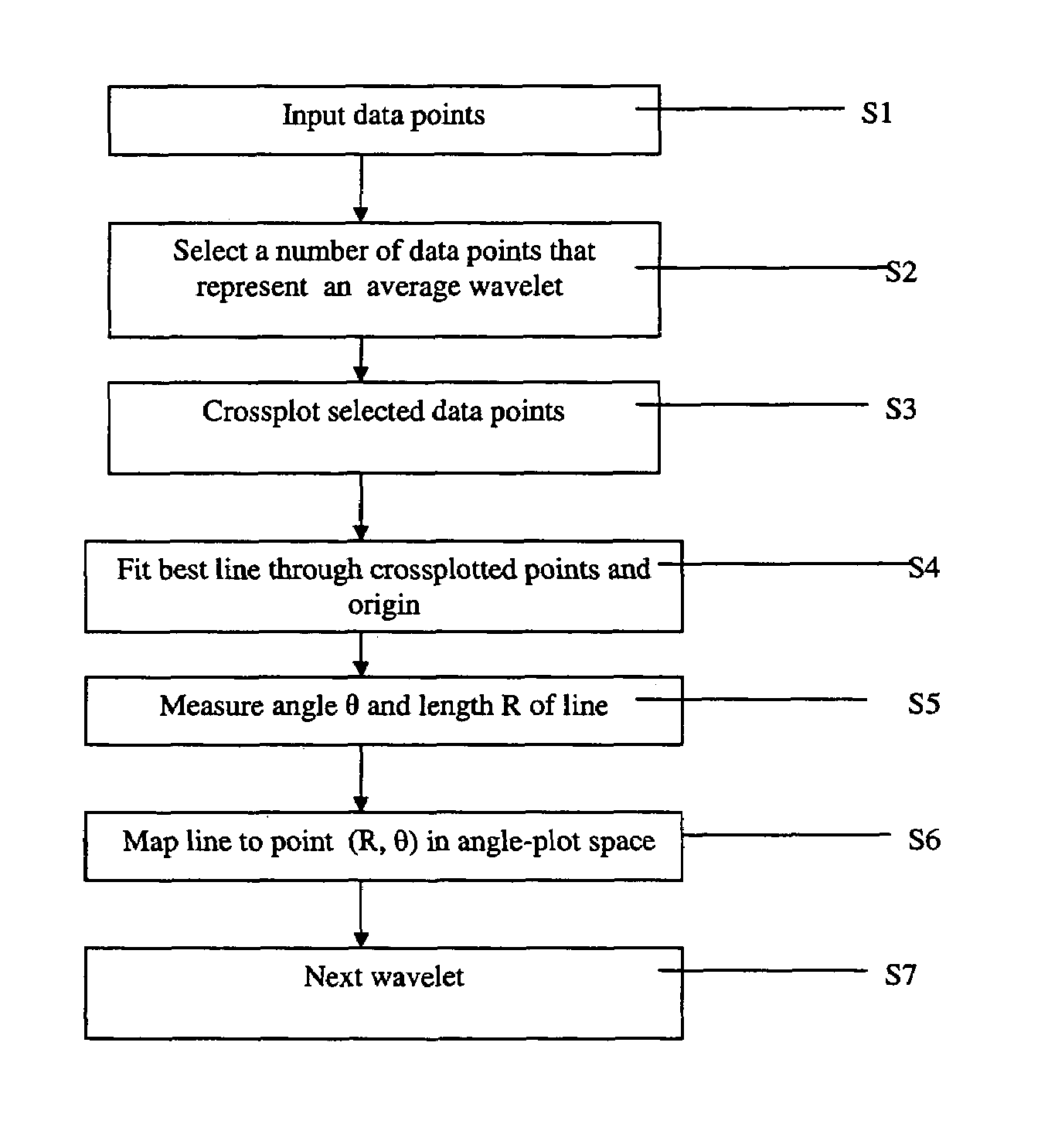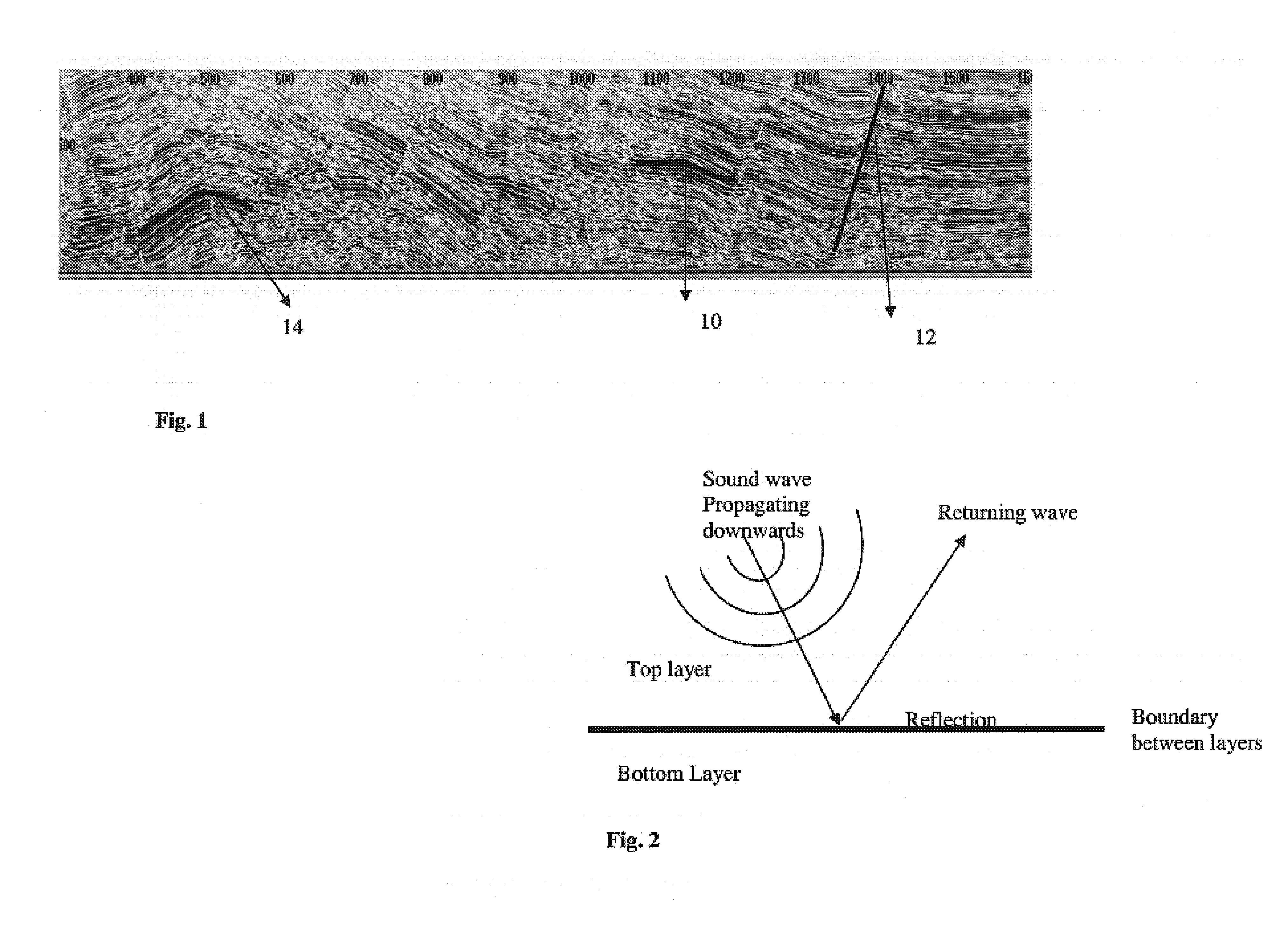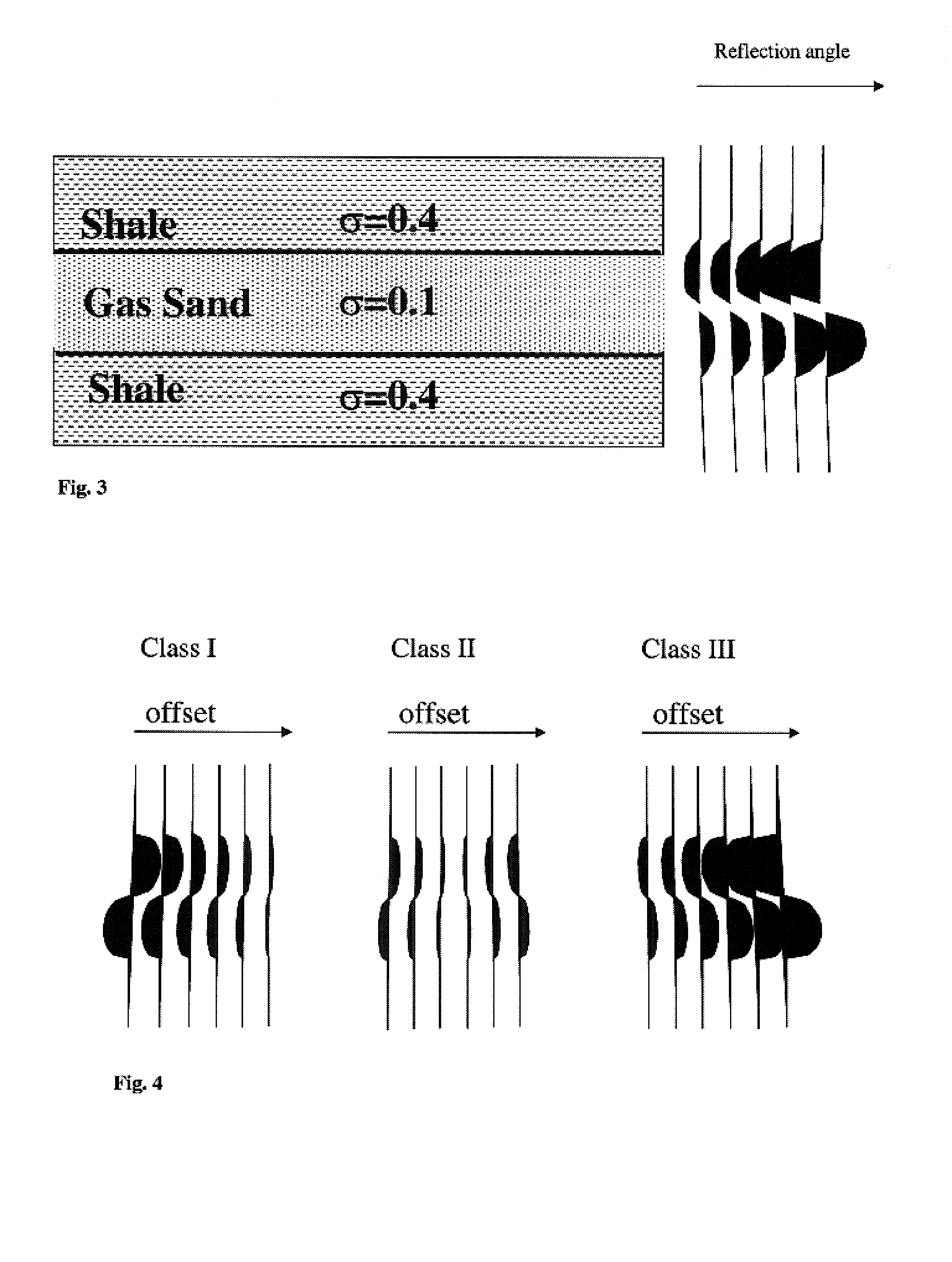Crossplot analysis of A.V.O. anomolies in seismic surveying
a technology of cross-plot analysis and seismic surveying, which is applied in the field of cross-plot analysis of a.v.o. anomalies in seismic surveying, can solve the problems of large seismic 3-d survey volume, inability to carry out manual matching by simple inspection, and often misses of geologists, so as to enhance said seismic section and enhance said 3d seismic image
- Summary
- Abstract
- Description
- Claims
- Application Information
AI Technical Summary
Benefits of technology
Problems solved by technology
Method used
Image
Examples
Embodiment Construction
[0128]The present embodiments provide a method and apparatus for analyzing the incoming data per wavelet. Each wavelet rather than each data point is treated as a single event. Note that a wavelet here corresponds to a fixed number of data samples that encompass the length of a typical wavelet in the dataset. The data points of the wavelet are plotted in crossplot space and a best fit line is fitted to the data of the individual wavelet. The angle and length of the best fit line are then plotted in angle-plot space, where the plots are found to cluster into the respective A.V.O. anomaly classes and non-anomaly data. The double plotting procedure as described above is referred to hereinbelow as the crossplot—angleplot procedure.
[0129]The use of the crossplot—angleplot procedure as described above on seismic imaging data according to the embodiments of the present invention allows for separation, that is clustering of A.V.O. anomaly data from non-A.V.O. anomaly data in crossplot space...
PUM
 Login to View More
Login to View More Abstract
Description
Claims
Application Information
 Login to View More
Login to View More - R&D
- Intellectual Property
- Life Sciences
- Materials
- Tech Scout
- Unparalleled Data Quality
- Higher Quality Content
- 60% Fewer Hallucinations
Browse by: Latest US Patents, China's latest patents, Technical Efficacy Thesaurus, Application Domain, Technology Topic, Popular Technical Reports.
© 2025 PatSnap. All rights reserved.Legal|Privacy policy|Modern Slavery Act Transparency Statement|Sitemap|About US| Contact US: help@patsnap.com



